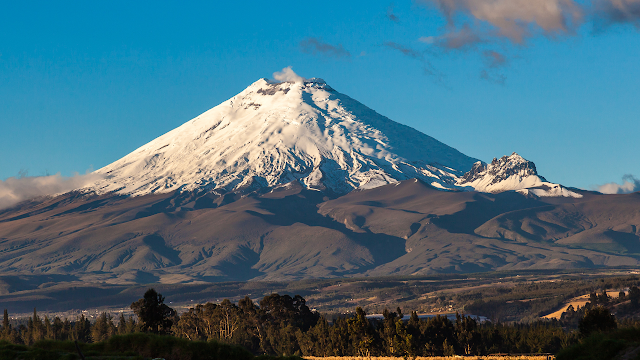Volcanoes have fascinated people for centuries. These natural wonders are not just geological formations; they are symbols of Earth’s raw power and beauty. Visiting a volcano can be an unforgettable experience, offering breathtaking landscapes, thrilling adventures, and insights into the planet’s history. If you’re a travel enthusiast looking for unique destinations, here is a list of famous volcanoes to visit.
1. Mount Fuji, Japan
Mount Fuji is one of the most iconic volcanoes in the world, located near Tokyo, Japan, this perfectly shaped cone is a UNESCO World Heritage site. Standing at 3,776 meters (12,389 feet), Mount Fuji is the tallest mountain in Japan. Visitors can hike to the summit during the climbing season, which runs from July to September. For those who prefer a more relaxed experience, the surrounding areas offer stunning views, especially during sunrise and cherry blossom season.
2. Mount Vesuvius, Italy
Mount Vesuvius is a must-visit for history and nature lovers. Located near Naples, Italy, this active volcano is famous for its eruption in AD 79, which destroyed the ancient cities of Pompeii and Herculaneum. Today, visitors can explore the archaeological sites preserved by volcanic ash. For a closer look at the volcano, you can hike to the crater and enjoy panoramic views of the Bay of Naples.
3. Kīlauea, Hawaii, USA
Kīlauea, located on Hawaii’s Big Island, is one of the most active volcanoes in the world. Part of Hawai‘i Volcanoes National Park, Kīlauea offers visitors a chance to witness volcanic activity up close. You can explore lava tubes, walk across hardened lava fields, and watch the glow of molten lava during nighttime eruptions. The park also provides educational exhibits about Hawaiian culture and the geological significance of the volcano.
4. Mount Bromo, Indonesia
Mount Bromo is one of Indonesia’s most famous volcanoes and a favorite destination for travelers seeking adventure. Located in East Java, this active volcano is part of the Tengger massif. Visitors can take a jeep ride or hike through the Sea of Sand, a vast plain of volcanic ash, to reach the crater. Sunrise tours are particularly popular, offering a magical view of Mount Bromo and the surrounding landscape bathed in golden light.
5. Mount Etna, Italy
Mount Etna, situated on the island of Sicily, is Europe’s tallest and most active volcano. You can take guided tours to explore the craters, lava fields, and ancient lava flows. In the winter, Mount Etna also doubles as a ski destination, making it a year-round attraction.
6. Arenal Volcano, Costa Rica
Arenal Volcano is one of Costa Rica’s most famous landmarks, although it’s no longer erupting, the volcano’s symmetrical cone and lush surroundings make it a top destination for eco-tourists. Visitors can hike through Arenal Volcano National Park, soak in natural hot springs, or enjoy zip-lining and canopy tours. The region is also rich in wildlife, offering opportunities to spot monkeys, toucans, and other tropical creatures.
7. Mount Kilimanjaro, Tanzania
Mount Kilimanjaro, the highest mountain in Africa, is a bucket-list destination for many travelers. This dormant volcano stands at 5,895 meters (19,341 feet) and offers a challenging yet rewarding hiking experience. Trekkers can choose from several routes to the summit, passing through diverse landscapes ranging from rainforests to alpine deserts. While Kilimanjaro doesn’t erupt, its volcanic origins add to its mystique and appeal.
8. Mount St. Helens, USA
Mount St. Helens, located in Washington State, is best known for its catastrophic eruption in 1980. Today, it serves as a natural laboratory for studying volcanic activity and ecosystem recovery. Visitors can explore the Mount St. Helens National Volcanic Monument, which features hiking trails, viewpoints, and educational exhibits. The Johnston Ridge Observatory offers a close-up view of the crater and the surrounding area affected by the eruption.
9. Cotopaxi, Ecuador
Cotopaxi is one of the world’s highest active volcanoes, standing at 5,897 meters (19,347 feet). Located in the Andes Mountains, this Ecuadorian volcano is part of Cotopaxi National Park. Adventurous travelers can hike or climb to the glacier-covered summit, while others can enjoy the park’s scenic trails and wildlife. Cotopaxi’s symmetrical cone and snow-capped peak make it a photographer’s dream.
10. Mount Pinatubo, Philippines
Mount Pinatubo gained international attention after its massive eruption in 1991, one of the largest in modern history. Today, the volcano is a popular tourist destination in the Philippines. Visitors can trek to the summit and admire the stunning crater lake, which has formed in the aftermath of the eruption. The turquoise waters and dramatic landscape make Mount Pinatubo a unique and beautiful spot to visit.
Why Visit Volcanoes?
Volcanoes offer more than just scenic beauty. They provide a window into Earth’s geological processes and the forces that shape our planet. Visiting a volcano can be an educational and thrilling experience. Many volcanic areas also offer activities such as hiking, photography, and cultural exploration, making them ideal destinations for travelers of all kinds.
Tips for Visiting Volcanoes
- Safety First: Always check the activity level of the volcano before visiting and follow local guidelines.
- Dress Appropriately: Wear sturdy shoes, layered clothing, and sunscreen, as weather conditions can change quickly.
- Respect Nature: Avoid littering and stick to marked trails to preserve the natural environment.
- Hire a Guide: For active or challenging volcanoes, consider hiring a local guide for safety and a better experience.
Conclusion
Visiting famous volcanoes is a fantastic way to explore the natural wonders of our planet. From the iconic Mount Fuji in Japan to the breathtaking Cotopaxi in Ecuador, these volcanic destinations offer something for everyone. Whether you’re an adventurer, a history buff, or a nature lover, adding a volcano to your travel itinerary will create memories to last a lifetime. Start planning your next adventure to discover the beauty and power of Earth’s most incredible landmarks.















